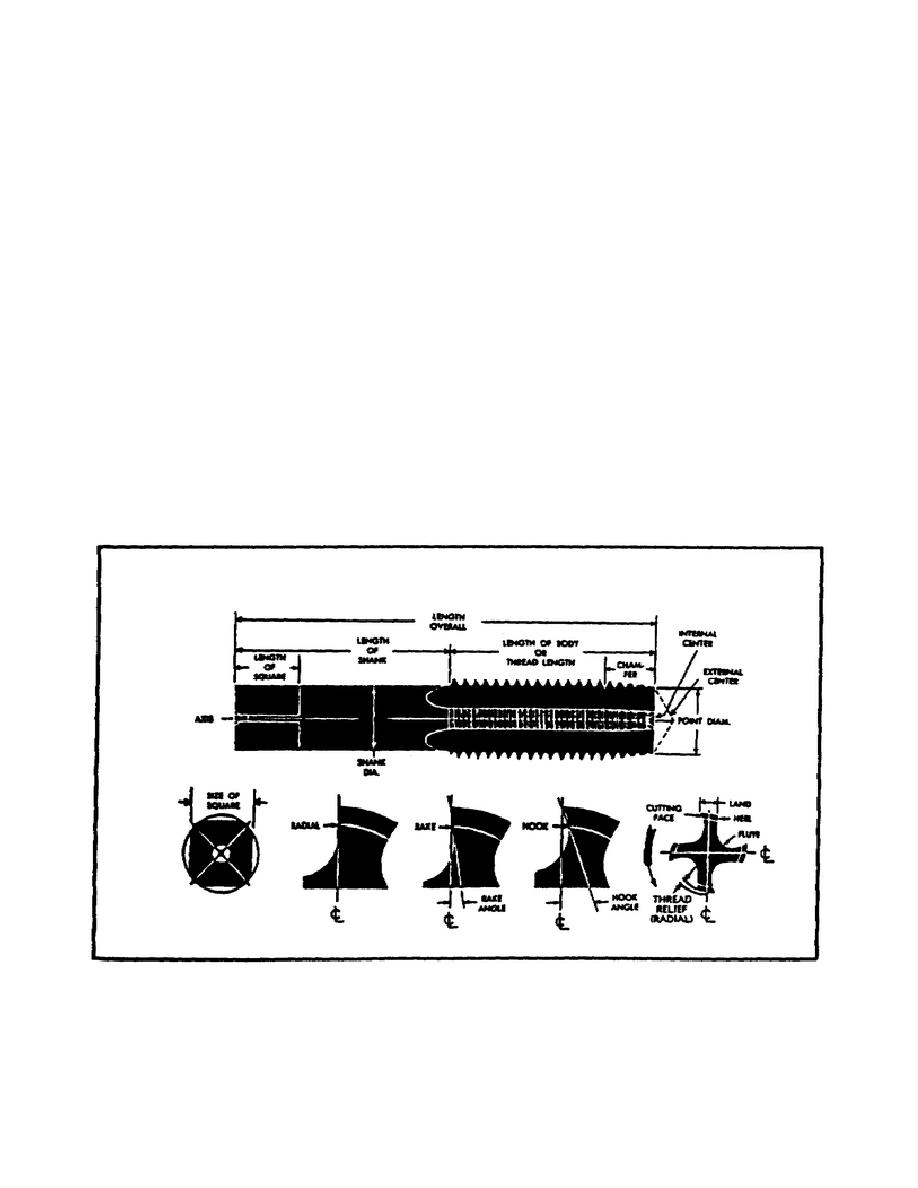
USE/CARE Of HANDTOOLS & MEASURING TOOLS - OD1621 - LESSON 2/TASK 2
e. Mechanics of Taps and Dies.
(1) General.
Taps and dies are manufactured of regular high speed
steel and surface-treated high speed steel.
Surface-treated high speed
steel taps have a secondary hardening which increases the hardness and wear
resistance of the cutting edges without subtracting from the toughness of
the body of the tool as a whole.
(2) Tap Design.
A tap is a threading tool designed to produce a
completed internal thread and to make threading possible without a lead
screw. A tap is basically a screw in which longitudinal channels or flutes
are cut or ground.
The flutes permit chips to escape and lubricants to
reach the cutting area and threaded metal. Terms used when discussing taps
are as indicated in (a) through (s) below (figure 133).
(a) Axis of Tap.
Longitudinal central through the tap.
(b) Back Taper. A slight taper on the body of the tap which makes
the pitch diameter of the thread near the shank somewhat larger than that
close to the point.
The pitch diameter equals outside diameter minus the
single depth of the thread.
FIGURE 133.
TAP TERMS.
174



 Previous Page
Previous Page
